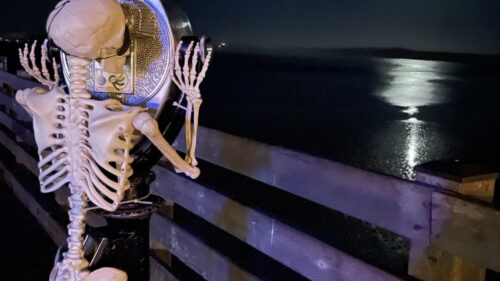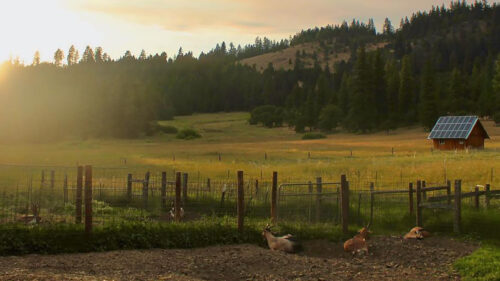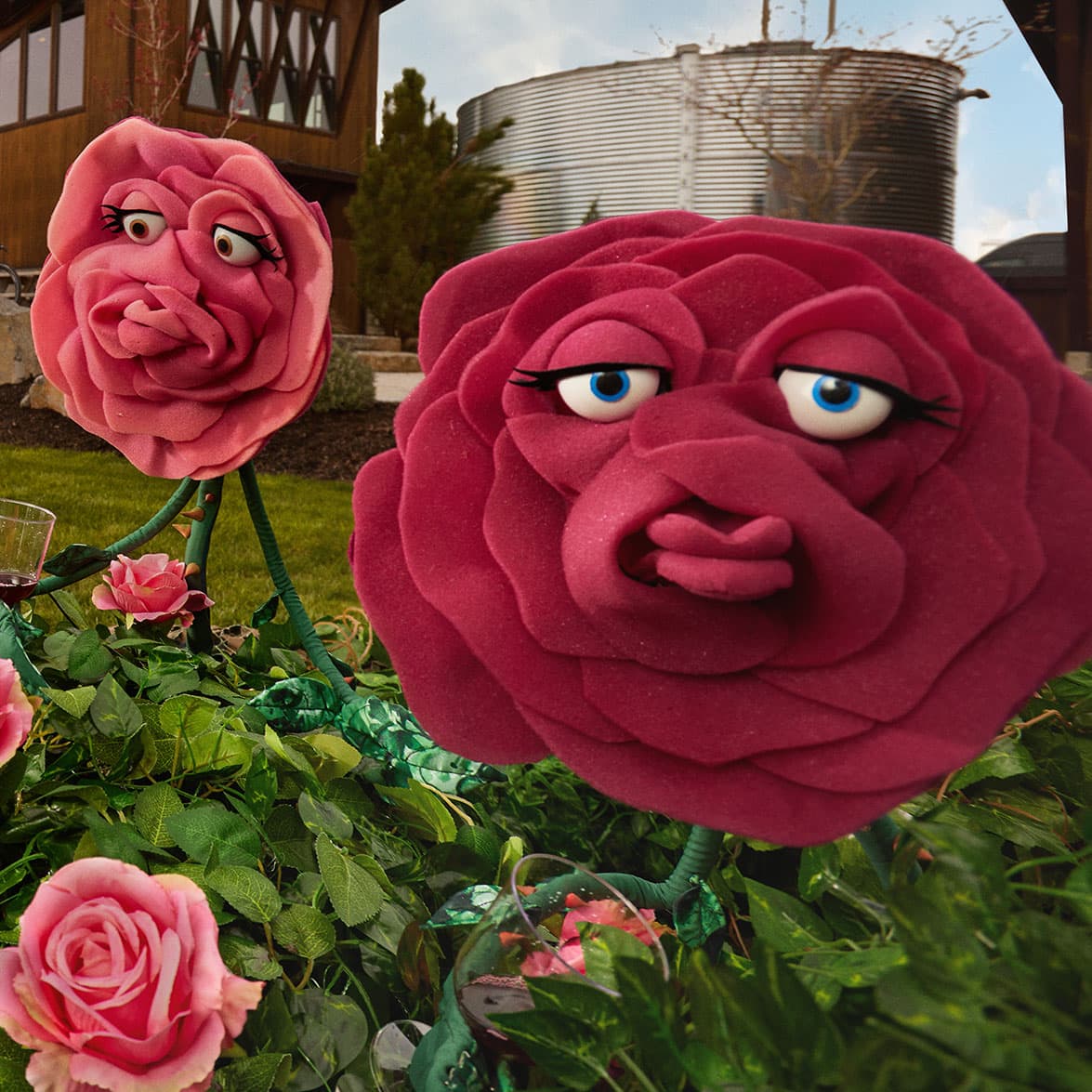Entering Jacksonville is like stepping into the world of a model-train set. Surrounded by rolling hills adorned with vineyards and orchards, its downtown bustles with visitors frequenting the boutiques and restaurants housed in Victorian storefronts. The town may be best known as home of the beloved Britt Gardens and Britt Music & Arts Festival.
As a Southern Oregon resident I’ve long known Jacksonville, the eastern gateway to the Applegate Valley in Jackson County, was built on gold mining, but aside from familiarity with place names — Britt and McCully House, for example — my knowledge had more than a few gaps. A Walk Through History tour hosted by Historic Jacksonville changed all that.
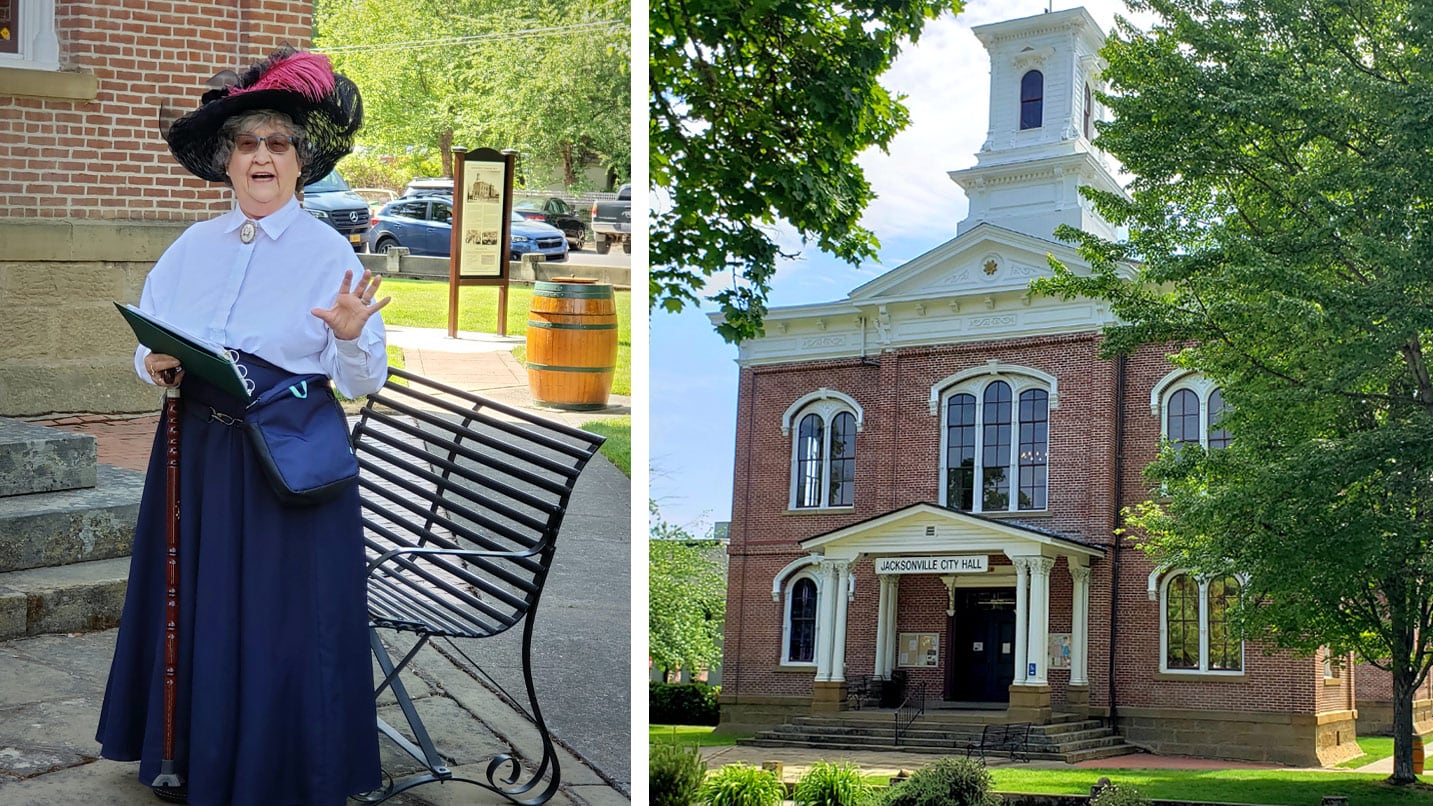
Head Back Into the Gold Rush
The tour begins on the front steps of the historic Jacksonville Courthouse building, where 14 of us have gathered on a beautiful Saturday morning. We immediately recognize our guide — a retired schoolteacher named Anne Peugh — thanks to her period dress and bonnet. “I’ve always been a storyteller,” she says.
As we head out for the walk, she sketches out the early days of a burgeoning gold rush town inhabited by “miners, merchants and women of ill repute.” On the side of the courthouse, she mentions that crimes and punishments actually drew crowds. In 1885, for example, 200 ticket holders witnessed the hanging of Louis O’Neil, accused of murdering his lover’s husband. The two-story brick building saw its last trial in 1927, when the DeAutremont brothers were convicted of murder for robbing a train in the Siskiyou Mountains and killing four railroad employees.
Several films have used Jacksonville as a movie set, including “The Great Northfield Minnesota Raid,” about a bungled bank robbery. It’s easy to see why, as we head up C Street toward the historic train depot, stopping along the way so Peugh can point out stately homes and churches. The streets are flat here, the trees sprawling — and there are lots of white picket fences. At one point, a friendly firefighter waves from across the street as he works in front of the firehouse.
At St. Andrews Methodist Episcopal Church, completed in 1854, Peugh describes Jacksonville’s rapid evolution. With the first flush of miners — and the merchants who got rich off them — came many Chinese immigrants, who worked the mines and created their own business district in town. Other influences soon arrived, including preachers, who took advantage of that wealth: St. Andrews was partially funded by donations solicited from gamblers in local saloons.
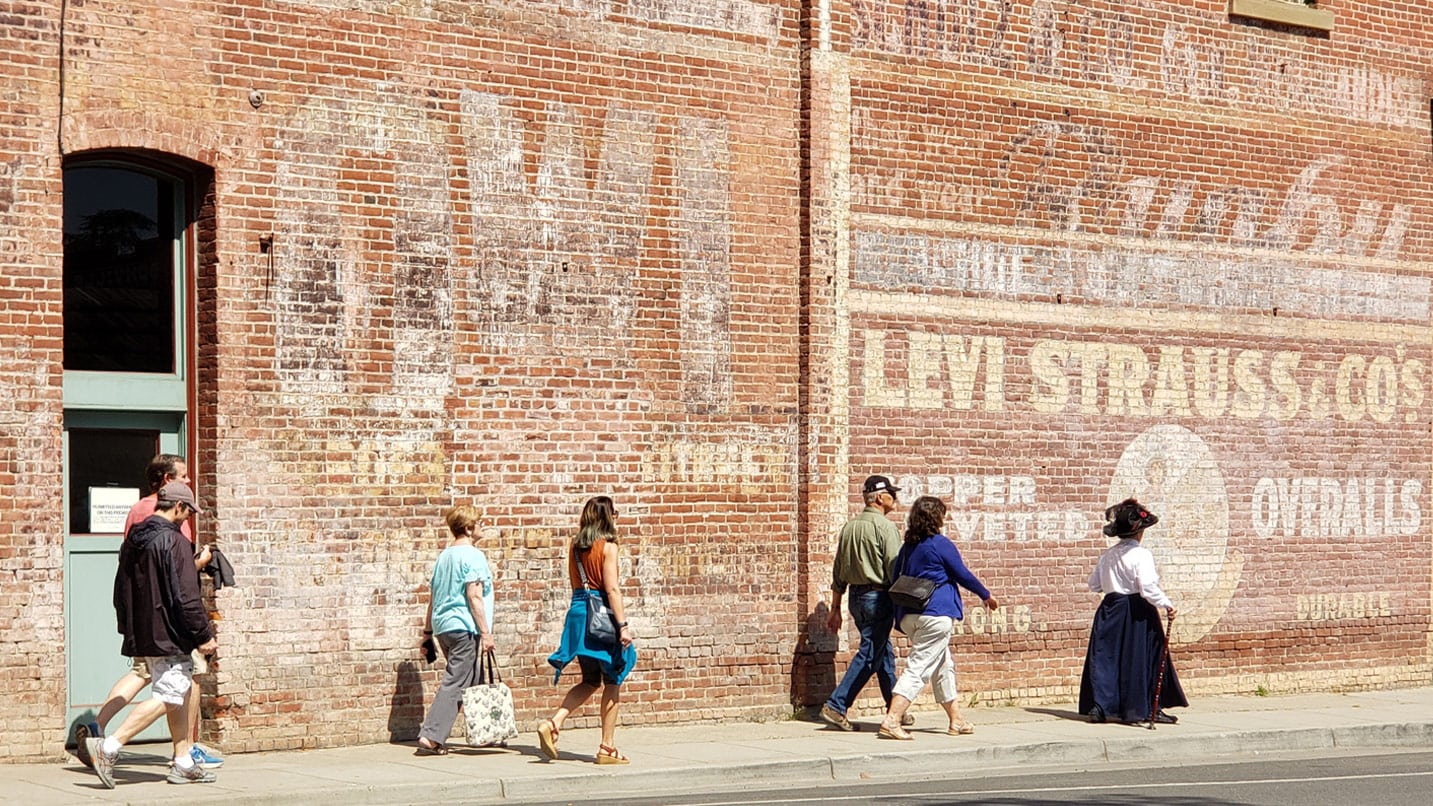
Appreciate Early Entrepreneurs
On California Street, we stop to admire the wood and brick facades along Jacksonville’s main downtown. We can still experience this stretch of street because the city couldn’t afford to modernize its buildings during the Great Depression, so much of the historic inventory has survived.
She also explains how the Depression almost sunk the town — literally. Instead of providing social services during that time, county leaders issued mining permits. Desperate residents excavated yards and underneath houses and commercial buildings, hoping to strike gold. This left the town riddled with sinkholes, some of which still occasionally cause issues to this day.
A short uphill hike brings us to the entrance to the Britt Gardens, the venue for Jacksonville’s premier summer music festival. A photographer, portrait artist and vintner, Peter Britt arrived in Oregon with little more than his painting kit. From a humble dug-out cabin, he built his homestead into an estate with vineyards, orchards, gardens and even a 14-room residence (which, unfortunately, burned in 1960). Today you can walk the winding brick path past cultivated ornamentals, continuing on the Sarah Zigler Interpretive Trail to the towering Sequoia that Britt planted in honor of his son’s birth.
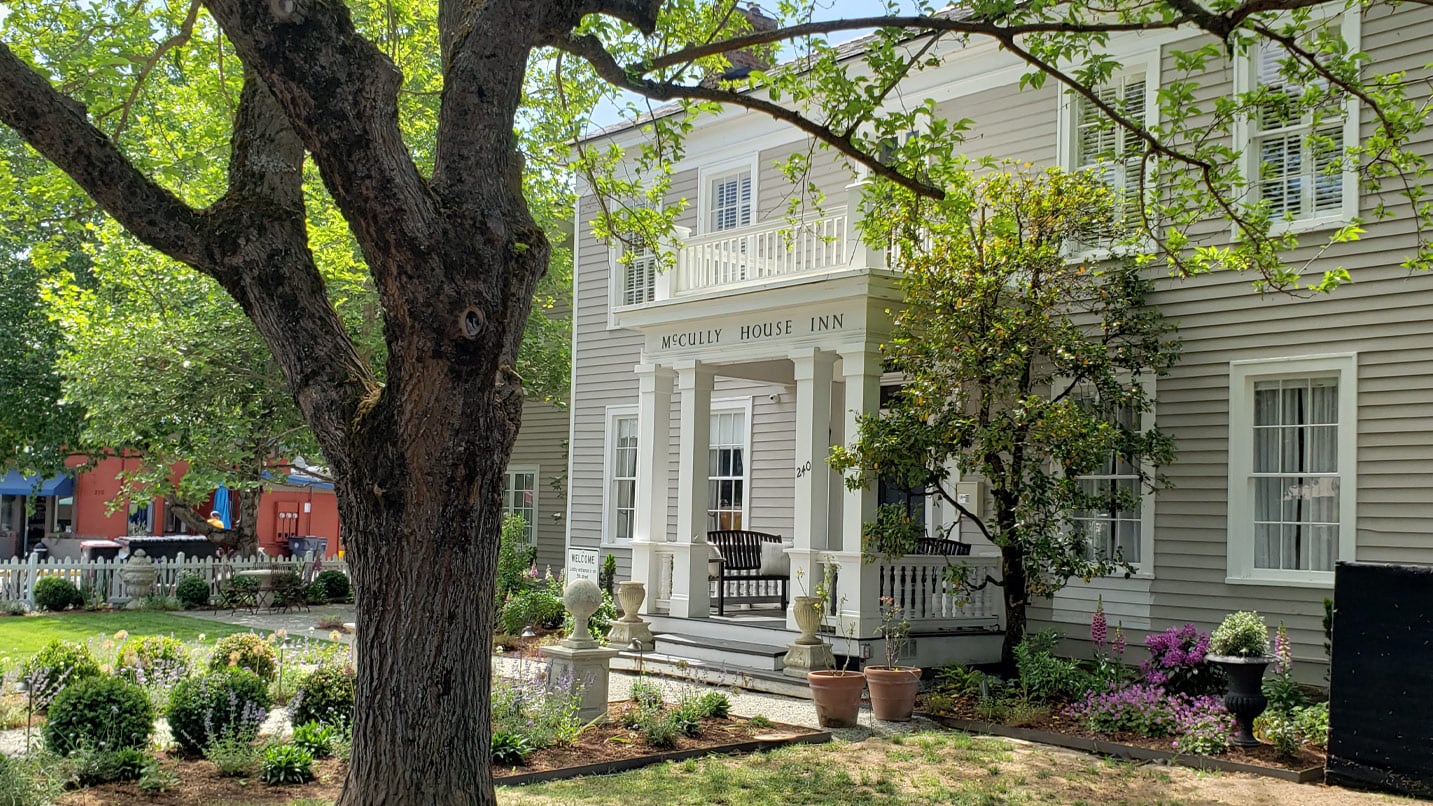
As we stand in the shade in front of the McCully House Inn — a graceful, classical revival-style residence built in 1860 on the east end of downtown — Peugh shares my favorite story of the tour. Jane McCully didn’t let betrayal and debt stop her. After her husband, John, a self-styled doctor and real estate magnate, abandoned her and their kids, she got to baking pies and taking in boarders. The miners loved these sweet slices, and soon she was able to open a school and eventually send her son to college. You can still lodge here at Oregon’s oldest historic residence still operating as an inn.
As my husband and I head back toward the courthouse and a late breakfast, we see Peugh still talking animatedly with a few lingering visitors. She flips through her notebook of historic photographs, infusing the dusty portraits with color and life, one of Jacksonville’s most passionate ambassadors.
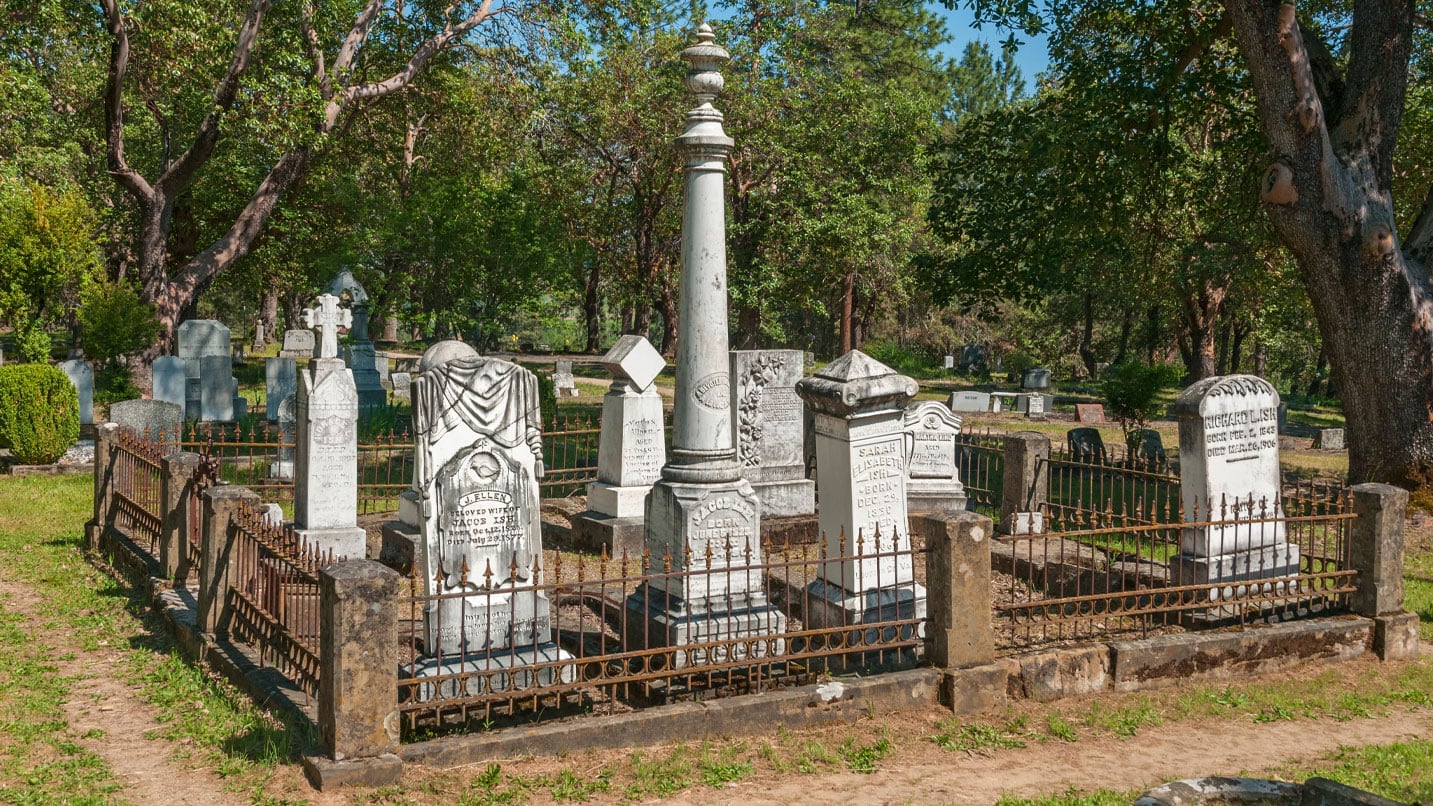
How to Experience Jacksonville History
The one-hour Walk Through History tour is offered late May through September. It’s free, although donations are accepted. The pace is leisurely, with many stops along the way, and the route mostly flat with one short but fairly steep incline to the Britt Gardens near the end of the tour. For more Historic Jacksonville tours, consider the thrilling Haunted History tour — with extended dates in October — or cross the threshold of the Beekman House and step into 19th Century Family Life, where costumed docents offer a peek into the day-to-day of a wealthy family.
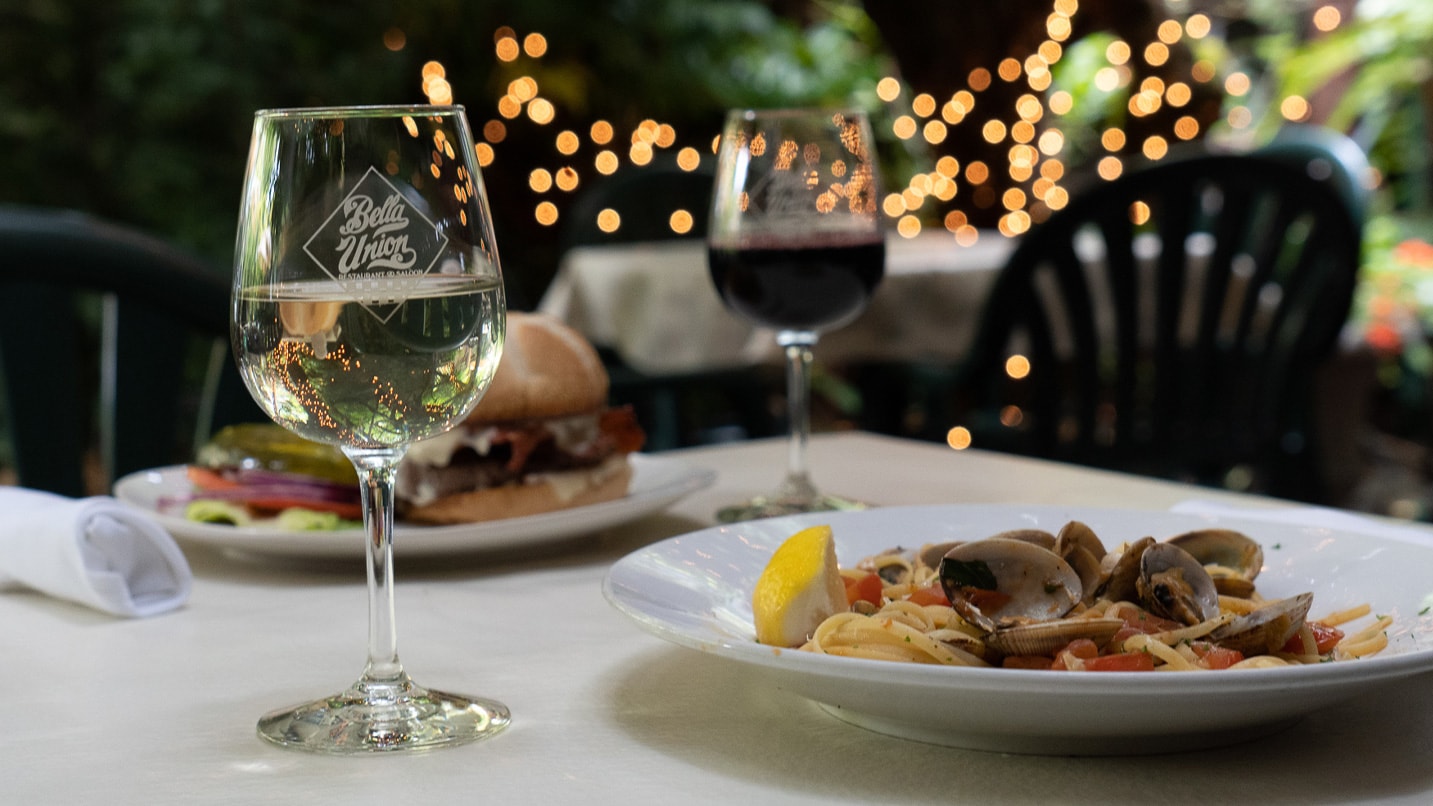
Places to Eat and Stay
If you want to fuel up before or after the walking tour, GoodBean Coffee has a case full of tempting baked goods as well as heartier made-to-order breakfasts. For dinner try al fresco dining at the charming Bella Union Restaurant & Saloon, which offers pizza, pastas and live music. For a truly immersive experience, stay in one of Jacksonville’s historic lodgings, including the McCully House, TouVelle House and Magnolia Hotel.
More Oregon History
Did you know that below the city of Pendleton in Eastern Oregon lies a secret business district connected by a series of tunnels built by Chinese workers? Learn all about it on Pendleton Underground Tours. For those 21 and older, check out the adults-only tour for a version with adult beverages.
If you’re in Eugene, download Strides for Social Justice app to accompany your walk or run with stories about the people, places and events that have shaped the experience of Black residents in and around Eugene. Choose from several narrated tours, with optional guided fitness exercises along the route.
For a self-guided audio car tour into the Klamath Basin in Southern Oregon, there are several great options. Hear about how the Modoc people fiercely fought to keep their ancestral territory with The Modoc War: A Homeland Lost, where you’ll begin in Klamath Falls and visit several museums, memorials and sacred sites.

